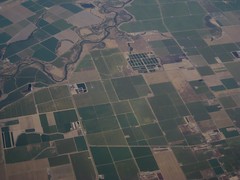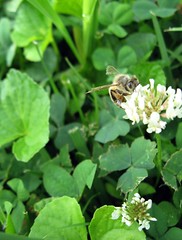 Image via Wikipedia
Image via WikipediaBy
Victor Krumm
Though tiny, Cocos Island (12 miles around), is one of the jewels of Costa Rica's National Parks and a UNESCO designated World Heritage site. It is the only island in the eastern Pacific containing a tropical rain forest.
And, in March 2011, an amazing, transformative event occurred. An event of extraordinary governance.
On that day, and with a stroke of its president's pen, Costa Rica took a giant step in sustainable development and preserving marine biodiversity, creating a massive marine conservation area of a million hectares around one of the most famous of all Costa Rica national parks.
To put this into perspective, the marine preservation area around Cocos was expanded five-fold, making it the second largest marine management in the eastern Pacific. Only Galapagos is larger. It was a "day of national pride" for Costa Rica and a big deal for world marine conservation.
Cocos Island, lying halfway between Costa Rica and the Galapagos Islands, has long been recognized as one of Costa Rica's Seven Wonders. It sits atop a seamount (an underwater mountain range), so dazzling, so magnificent, so filled with marine animals that it inspired the famous undersea explorer, Jacque Cousteau, to declare it "the most beautiful island in the world."
Once, there were so many sharks swimming its waters that it was often called Shark Island. Scientists, conservationists, television filming crews, and scuba divers came from around the world to experience its wonders. They were greeted by a bewildering number of large marine animals. Not only sharks but rays, tuna, porpoises, sea turtles, and much more.
And, of course, fishermen took note as well. Not a few fellows making a living but huge, commercial fishing operations that have been threatening Cocos' bounty for years.
Unrestrained industrial fishing and indiscriminate killing on a scale so massive most of us can't even imagine it.
Worst of all are the factory trawlers which, in search of shrimp, drag the sea bed with giant nets the size of football fields that not only scoop up enormous amounts of shrimp but also vast amounts of "by-product", crustaceans, corals and sponges, sea turtles, adult and immature fish, and everything in their path, leaving behind huge swaths of ocean floor virtually devoid of life.
And, what happens to this "by-product?" Most of it is thrown overboard, discarded. Trash. Billions of creatures, young and old alike. Nothing is spared. Marine ecosystems that took eons to form gone in hours. Life replaced by death. Industrial fishing trawlers are decimating our oceans and are the most destructive of all human actions involving our seas. Nothing else compares.
Every year factory trawlers drag the equivalent of twice the size of the continental United States, kicking up plumes of sediment so large that they are visible, literally, from space, leaving behind entire lifeless marine ecosystems.
Once, the outer banks off Newfoundland were so full of cod that, in 1497, the English explorer, John Cabot, remarked that they blocked his ship. For over a century, 250,000 tons were caught every year. Despite the warnings of scientists, factory trawlers from around the world continued coming until in 1992, the entire fishery collapsed.
Tens of thousands of fishermen lost their livelihood and the fishery had to be closed.
What happened to the factory trawlers? They simply moved on for, after all, they're simply opportunists in it for today's cash. The future be damned.
Truth is, the oceans aren't being fished so much as plundered, decimating or already destroying 75% of the world's fish stocks at an annual worldwide economic loss of $50 billion-losses often hidden in government subsidies. Economic and fishing losses that are wholly avoidable, unnecessary, and unsustainable.
The World Bank estimates that, with proper governance, sustainable fisheries can go from a huge global economic loss to an economic surplus, drive economic growth, and restore fisheries. Unfortunately proper fisheries governance is in short supply worldwide and political will virtually nonexistent. With a few exceptions, like Costa Rica.
For years, this tiny country, occupying about 1/10,000 of its surface area, has led the way towards sustainable development. It has set aside nearly 25% of its land for parks and preserves, replanted about 25% of its forests, is on track to be the first carbon neutral country on the planet by the end of this decade, and has declared that it wants to end man's ceaseless war with nature and make peace with it:
"Costa Rica is a small country, but it can be a great leader. Nearly sixty years ago, we became the first nation in the world to abolish our army. Today [2008], we seek to make history once again by becoming the first nation in the world to protect its national wonders, on land and under the sea, in perpetuity" - Former Costa Rica President Oscar Arias.
That vision, that commitment, that governance, is carried on by President Laura Chinchilla, who created the magnificent Seamounts Marine Management Area in March 2011, massively expanding the protected waters and seamounts around Cocos Island to nearly 4,000 square miles. Important habitat to many species, including highly endangered scalloped sharks and ancient leatherback sea turtles, is now preserved into perpetuity. Industrial trawlers won't decimate this marine ecosystem.
Life and an ecosystem that took eons to form will continue to flourish. No more massive plumes of sand - signs of death - visible from space.
140 years ago, President Ulysses S. Grant created the world's first national park, Yellowstone, preserving an entire terrestrial ecosystem from exploiting opportunists. Good governance, Mr. President. Seamounts Marine Management Area is even bigger than Yellowstone and preserves an entire marine ecosystem. A well deserved "day of national pride for Costa Rica."
About the writer: Vic Krumm lives in sunny Costa Rica. Visit his acclaimed website about
Costa Rica Vacations. And, in a world where biodiversity is under attack, learn why
Costa Rica Conservation and biodiversity policies are world-famous.
Article Source:
http://EzineArticles.com/?expert=Victor_Krumm
http://EzineArticles.com/?Saving-Cocos-Island-and-Its-Marine-Ecosystem:-An-Act-of-Superior-Governance&id=6078885
 Image by mattroyal via FlickrBy Allie Moxley
Image by mattroyal via FlickrBy Allie Moxley

































